Ukraine is located in Europe and it is the second-largest country in the continent when it comes to area. Considered the breadbasket of Europe, Ukraine produces a lot of wheat and corn, which are important crops that feed hundreds of millions every year. The Black Sea borders Ukraine to the south, as well as seven countries.
Let’s delve a little into Ukraine’s geography, climate, and history. The country experiences a temperate climate, except for Crimea, which usually has a subtropical climate. It’s important to note that Russia currently controls Crimea, although the international community recognizes it as part of Ukraine. Geographically, Ukraine mainly has plains and steppes, with a few mixed forests scattered throughout the country.
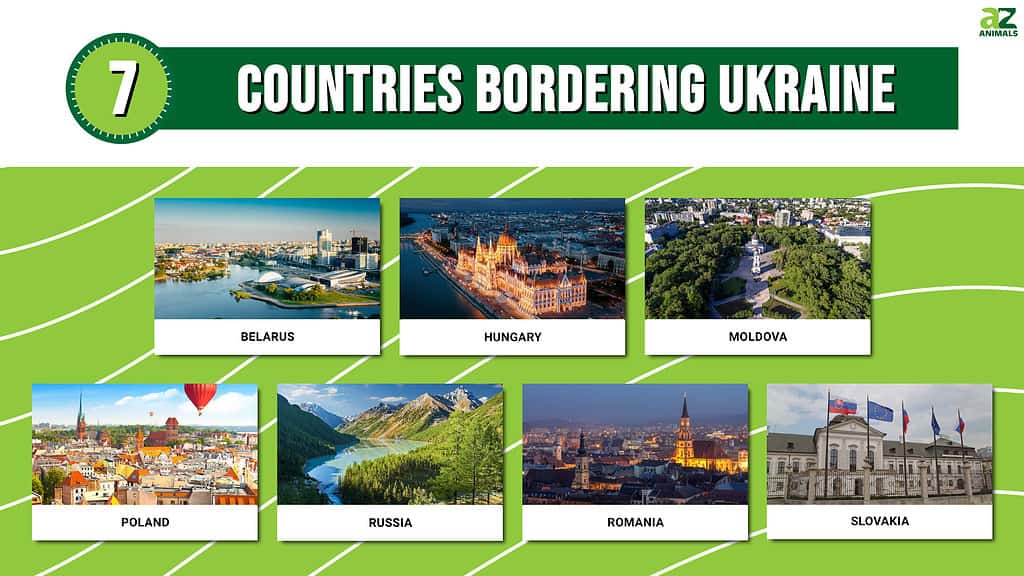
Historically, the land of what is now Ukraine has always been controlled by others. Lithuania, the Mongols, and Russia controlled the land at some point in time. Russia ruled Ukraine with an iron fist, even going as far as banning the Ukrainian language from being spoken or written in public.
In 1986, the deadliest nuclear accident to date occurred in Chornobyl, Ukraine. A nuclear reactor exploded and has caused devastation in the area ever since, greatly impacting generations of Ukrainians living in the region.
In 1991, Ukraine became independent after the fall of the Soviet Union. Today, Ukraine is embroiled in a war with neighboring country Russia, after Russia invaded Ukraine in February 2022. Let’s explore the seven neighboring countries around Ukraine.
Belarus

After the collapse of the Soviet Union, Belarus held free elections in 1994 and has since been the only free elections to date.
©Ryhor Bruyeu/iStock via Getty Images
Belarus borders Ukraine to the north. The country is mostly flat, however, 40% of the country is covered in forests, which is why it is considered to be the lungs of Europe. The country may be landlocked, but there are several major rivers, as well as 11,000 lakes. Because of its proximity to Ukraine, unfortunately, 70% of the radiation from the 1986 Chornobyl disaster flew into the southern portion of Belarus.
In the aftermath of the fall of the USSR, Belarus has been independent. In the first free elections of the country in 1994, Alexander Lukashenko was elected and has been in power ever since. Belarus is seen by many Western countries as an authoritarian government that has continued many Soviet-era policies. Belarus and Russia are also close allies and one of Russia’s few supporters in the Russia-Ukraine war.
Hungary

The unique language of Hungarian is considered by many to be one of the most difficult to learn.
©R.M. Nunes/iStock via Getty Images
Hungary is a landlocked country that borders Ukraine to the west. It sits south of Slovakia and north of Serbia and Romania. Geographically, Hungary is a flat country that is quite agricultural. The Danube is one of the most important rivers in Europe, which runs through the country and nine other countries. Hungary is home to various animals like the mouflon sheep, deer, and wild boars.
Like Ukraine, Hungary has been controlled by other powers throughout history. It was a part of the Austro-Hungarian Empire and then it was controlled by the USSR until its independence in 1990. Today, Hungary is a democracy, though it has been subject to various human rights violations.
Moldova
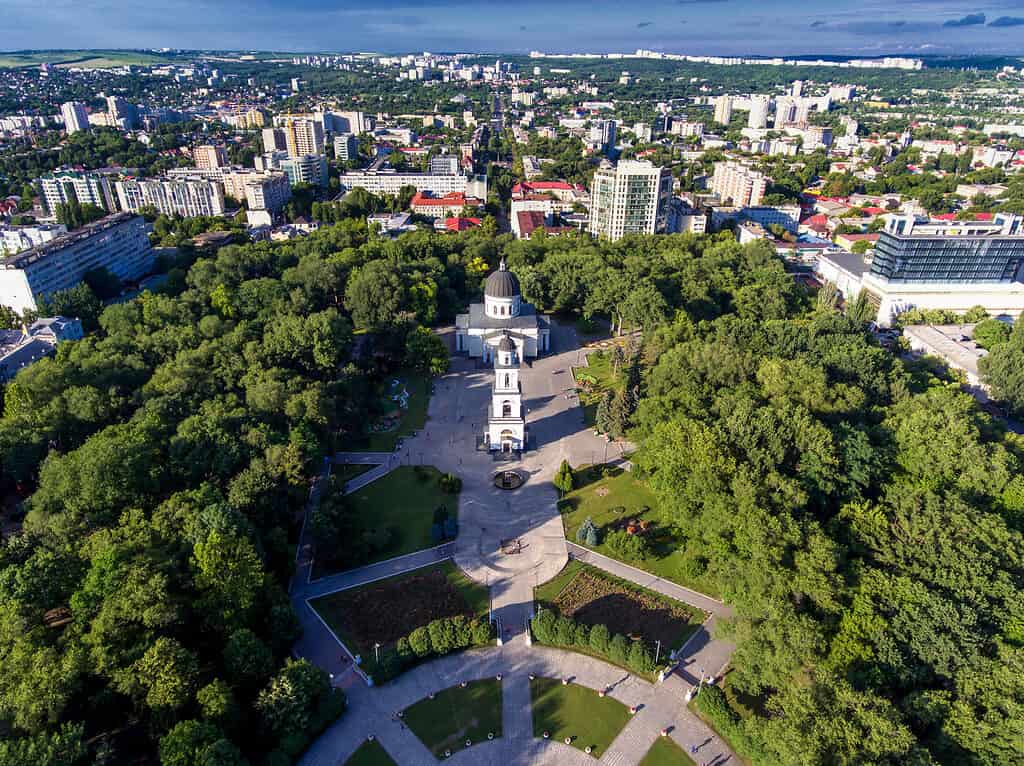
The largest wine cellar in the world is located in Moldova.
©Calin Stan/Shutterstock.com
Moldova is to the south of Ukraine and because of its proximity to the Black Sea, the country experiences milder winters than other parts of Europe. The country is technically landlocked since no part of it touches the Black Sea, but it has nearby mountains and the southern portion is quite flat.
Historically, most of Moldova was part of the Principality of Moldavia but was also controlled by the Ottoman Empire. Most of the territory was then part of the Russian Empire until it became an independent country. It was part of the Soviet-controlled states throughout the 20th century until it once again became independent in 1991.
Poland
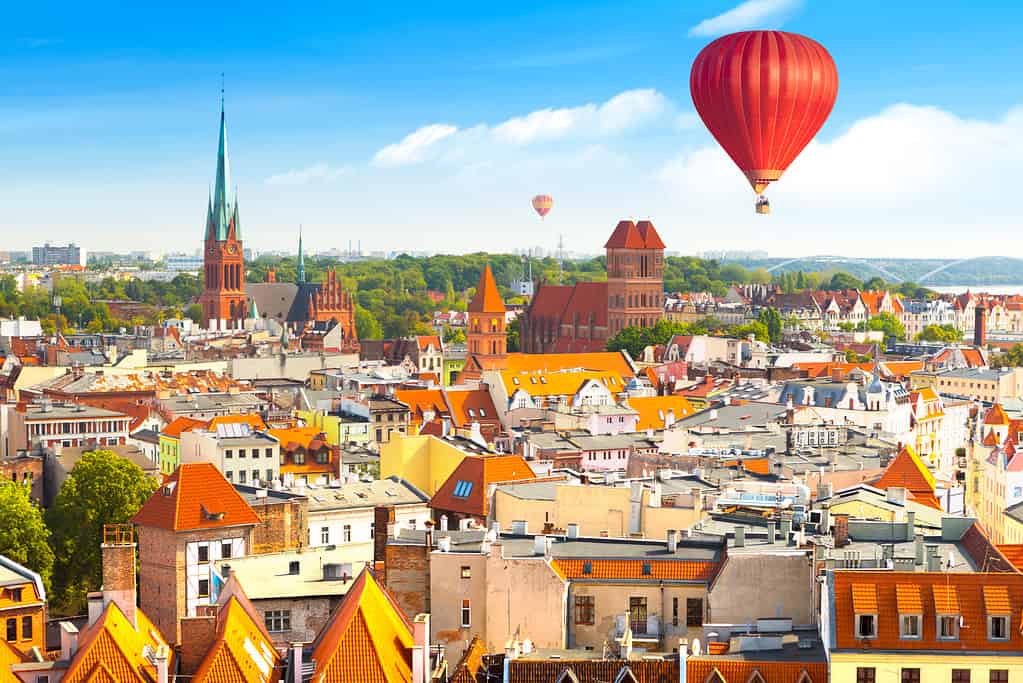
Vodka was invented in Poland.
©Aleh Varanishcha/ via Getty Images
Poland borders Ukraine to the northwest. The country, like Ukraine, has a temperate climate and it experiences true seasons throughout the year. Nearly 40% of Poland is covered in forests and the country’s Bialowieza Forest is where the European bison makes its home.
Historically, Poland has been the site of many conflicts. Other European powers have controlled the land of what is now Poland throughout history. For example, in 1795, Russia, Prussia, and Austria conquered the country and divided it. After World War I, Poland enjoyed brief independence but then Hitler invaded Poland on September 1, 1939. This, in turn, sparked World War II. After the war, Poland fell to the Soviet Union but became independent in 1989. Today, Poland is an independent nation.
Russia
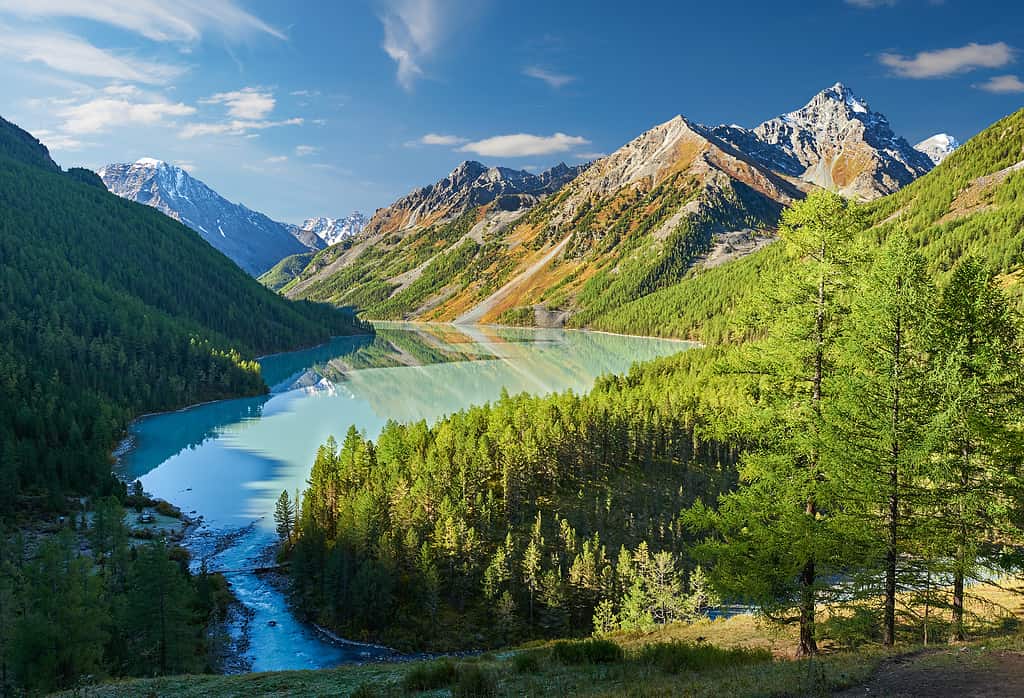
Most of Russia’s population lives on the European side of the country.
©Yuri Taranik/ via Getty Images
The country of Russia borders Ukraine to the northeast but has also occupied Crimea and some parts of Ukraine due to the ongoing war between the two countries. Russia is an expansive country and one of the largest in the world. Most of the country is uninhabited because 75% of Russia is covered by tundra and forest. The country has several mountain ranges, with one of the largest being the Caucasus Mountains. Russia also has some of Europe’s largest lakes, Lake Ladoga and Lake Onega.
Russia has been a major power for centuries, but especially in the 20th century after the Russian Revolution. Named the Soviet Union, it constantly was in a “cold war” with the United States and it ruled other controlled states with an iron fist. The Soviet Union collapsed in 1991 and it became a capitalist democracy. In the recent decade, however, Vladimir Putin has taken the country into a more authoritarian regime.
Romania

The world’s heaviest building is located in Romania.
©Mihai-Bogdan Lazar/Shutterstock.com
Romania sits to the south of Ukraine and it is also a maritime neighbor because of the Black Sea. The country is quite geographically diverse with mountains, plains, and hilly areas. Almost one-third of the country is covered in forests, which in turn, makes Romania a very biodiverse country. Romania has both continental and temperate types of climate.
Part of the Roman Empire, it later got swallowed up by the Ottoman Empire until the mid-1870s when it became an independent nation. During World War I, Romania fought alongside the Allies, but in World War II, it was on the side of the Axis powers. After World War II, it was a Soviet-controlled state until 1989 when it gained independence.
Slovakia
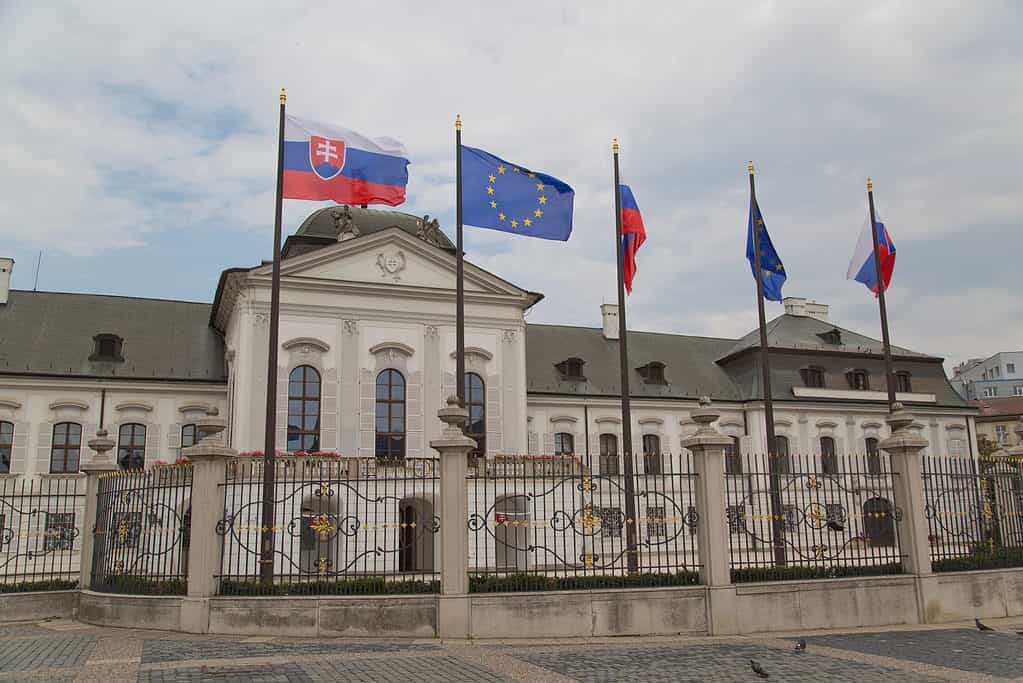
Slovakia’s capital, Bratislava, is the only capital in the world that is in one country and borders two other countries: Austria and Hungary.
©Kutikan/Shutterstock.com
Slovakia borders Ukraine to the west. A landlocked country, it is one of the most mountainous countries in Europe. The Carpathian Mountains cover more than half of Slovakia. It is home to diverse wildlife with a whopping 29,000 animal species. The biodiversity includes the Tatra chamois, various species of fungi, and a slew of trees and plants.
After the fall of the Soviet Union, Czechoslovakia became an independent republic. In 1993, however, Czechoslovakia split in two: the Czech Republic and Slovakia. Today, Slovakia is part of the European Union and has slowly been flourishing.
Ukraine Facts
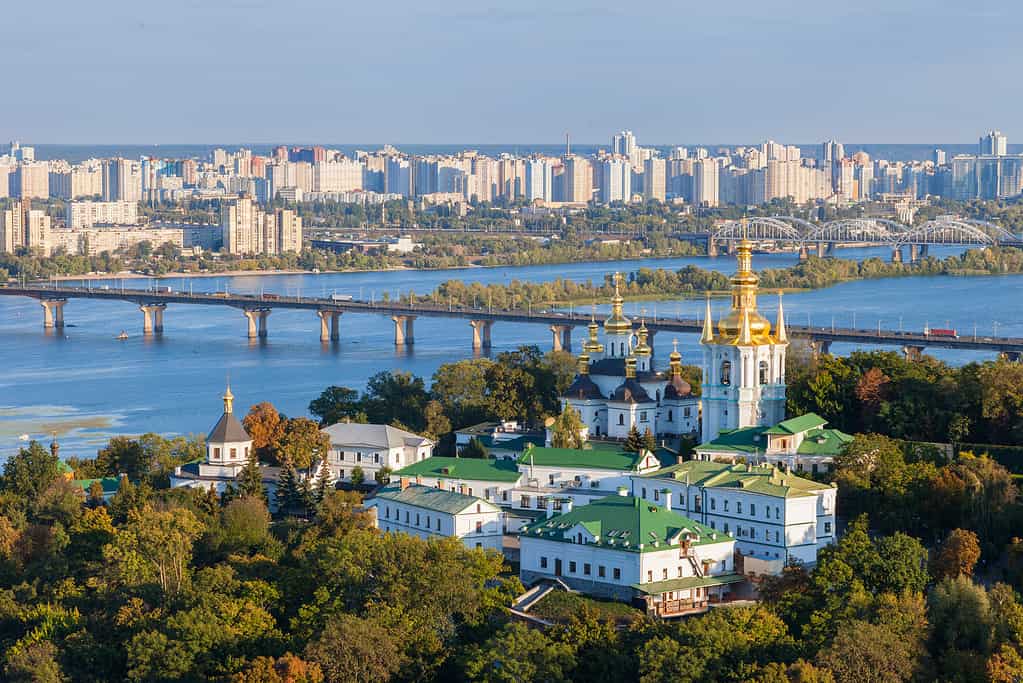
In terms of area, Ukraine is the second-largest country in Europe.
©ChamilleWhite/iStock via Getty Images
- Capital: Kyiv
- Population: 33.2 million (as of October 2023)
- Currency: Hryvnia
- Official Language: Ukrainian
- President: Volodymyr Zelenskyy
- Prime Minister: Denys Shmyhal
Conclusion
The countries bordering Ukraine in 2024 include Belarus, Hungary, Moldova, Poland, Romania, Russia, and Slovakia. Before the Ukraine-Russia war in 2022, Ukraine was on the upswing of things. The country’s economy was on the rise and corruption was slowly being rooted out with the election of Zelenskyy. There have been, however, accusations of corruption during the war.
In the ongoing fight to ensure Russia does not invade the entire country, Ukraine is playing defense with the aid of major European powers and the United States. There is only hope that the war ends and Ukraine can continue on its path of being a thriving, independent country.
Summary of the 7 Countries Bordering Ukraine
| Country | Location | |
|---|---|---|
| 1. | Belarus | Borders Ukraine to the north |
| 2. | Hungary | Borders Ukraine to the west |
| 3. | Moldova | Borders Ukraine to the south |
| 4. | Poland | Borders Ukraine to the northwest |
| 5. | Russia | Borders Ukraine to the northeast |
| 6. | Romania | Borders Ukraine to the south |
| 7. | Slovakia | Borders Ukraine to the west |
The photo featured at the top of this post is © hyotographics/Shutterstock.com
Thank you for reading! Have some feedback for us? Contact the AZ Animals editorial team.







